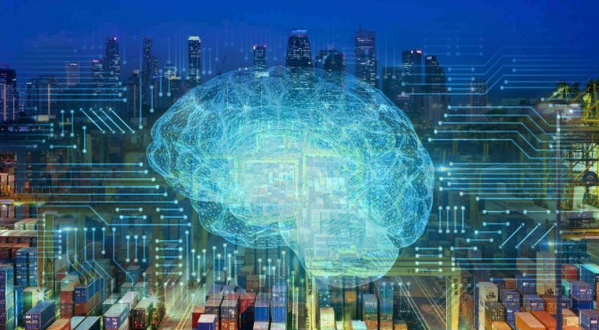AI in Terminals

What does AI mean for Terminals?
In this current era, existing processes and available resources which cannot efficiently or immediately meet operational demands, has become the incentive for terminal operating systems to expand their field into alternative technologies. As a result, AI has become quite the common buzz word, sparking opportunities for the Container Handling Industry to venture for strategies which enhance operational flow and decision-making. However, AI is still in its early stages due to its complexity requiring immense efforts and strong expertise in the area to develop a quality product manifesting its true capabilities. Subsequently, little to no terminal operating systems integrating capable and skillful AI into their systems are available on the market.
Is it really AI in your TOS?
Terminal operating systems are the heart of every terminal powering operations right from planning down to execution. However, when AI is integrated into a TOS, it must be unwavering of the centralized server architecture. Before we continue to expand on this, it is crucial to understand the constructs of AI which follows a process that collects pools of data, then learns from it, makes algorithms, and applies this knowledge to make independent decisions automatically. As a result, Big Data is not only an integral component of the initial stages of AI learning, but having accurate and reliable data is also another necessity.
Your conventional TOS requires multiple servers to load information, which not only instigates longer wait times but inherently pulls fragmented data. Data becomes redundant when flowing through a TOS with a decentralized architecture that cannot support real-time control and planning. A non-true real-time environment instills inefficiencies within operations and management, mainly when changes made to data has already been processed onto the next step. Static control processes respond ineffectively to changes since the information which is now deemed redundant will continue to be worked on until the new modified data is retrieved from the previous workstation operator. Changes made from the previous process may not inflict such drastic impact upon the current planning task, but what if alterations need to be made from five steps prior?
Consequently, if data is not in its most updated state, poor decision-making from AI is a strong likelihood, inducing inefficiencies in terminal operations. The omission of core AI components will directly tamper the execution process such that CHEs will misplace containers in the yard or move containers in a yard bay that is no longer available, incurring additional moves and time for it to be placed in its correct location. These events will snowball and will inevitably yield a reduction in ROI. Therefore, for AI within a TOS to be beneficial for a terminal, it must devise an architecture that sustains real-time control planning to ensure that CHEs are always making the optimum number of moves and achieve accurate decisions.
